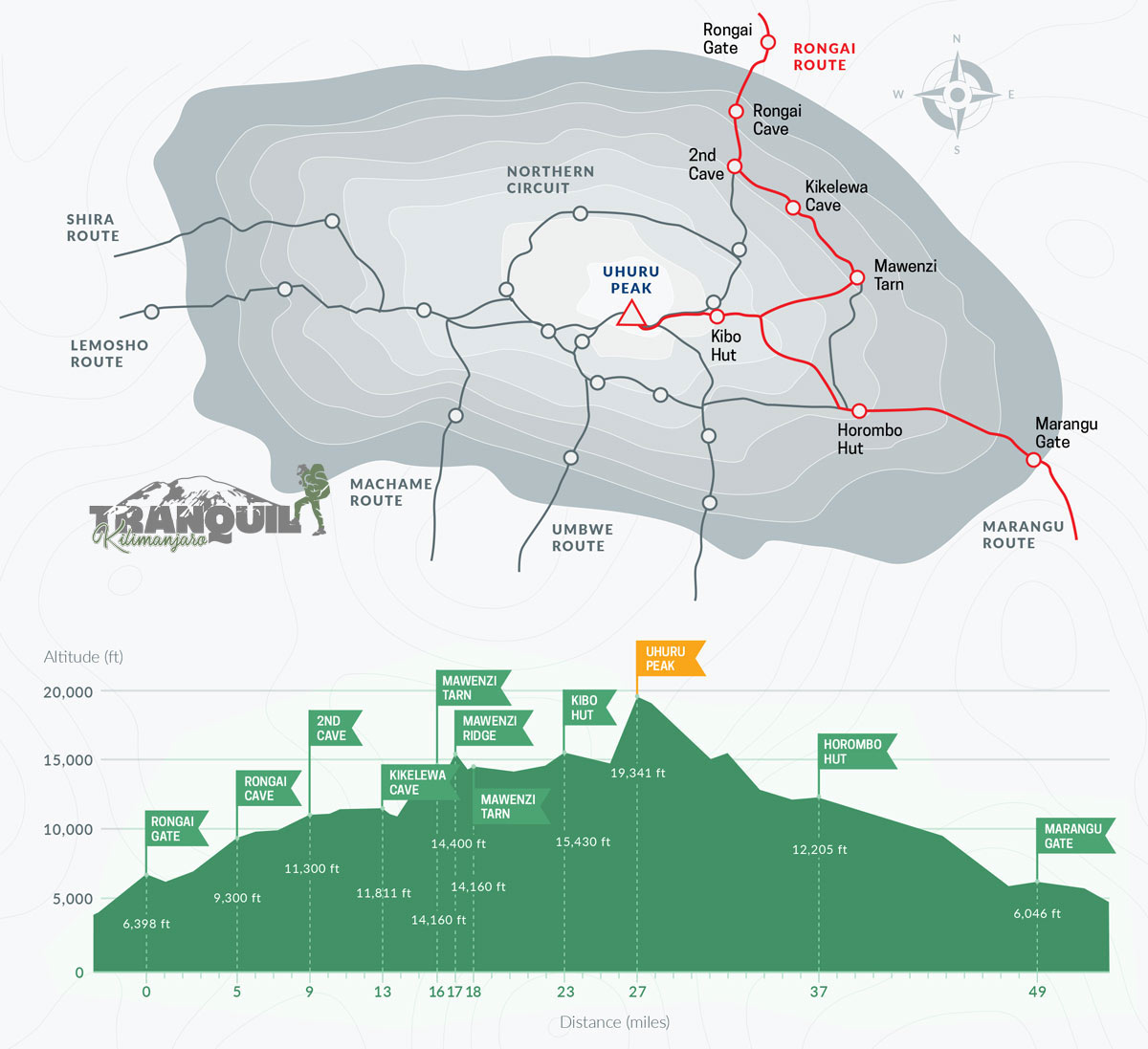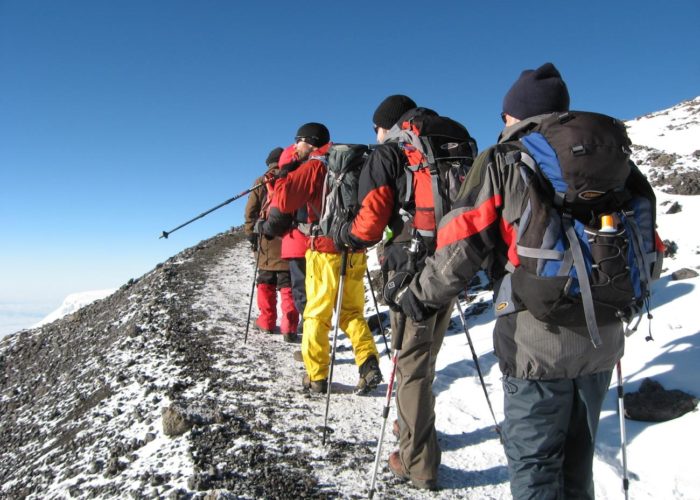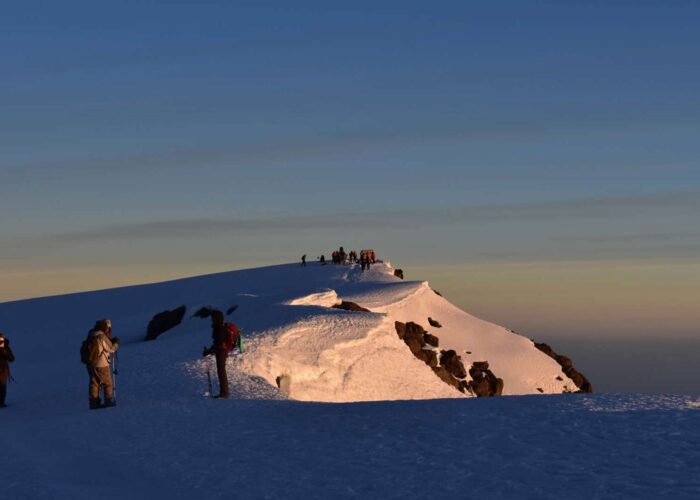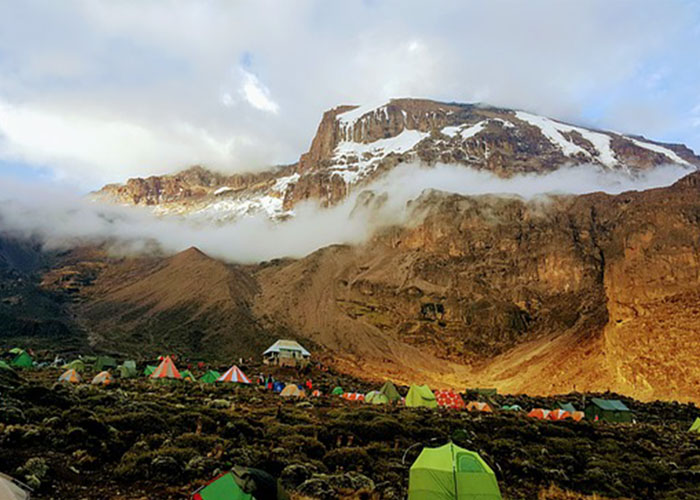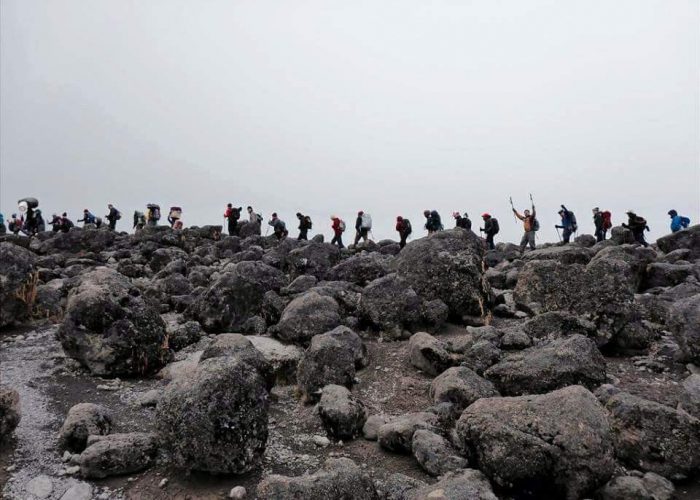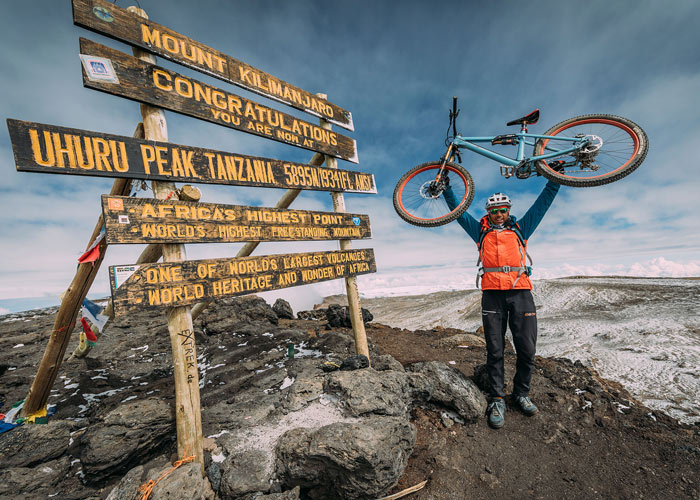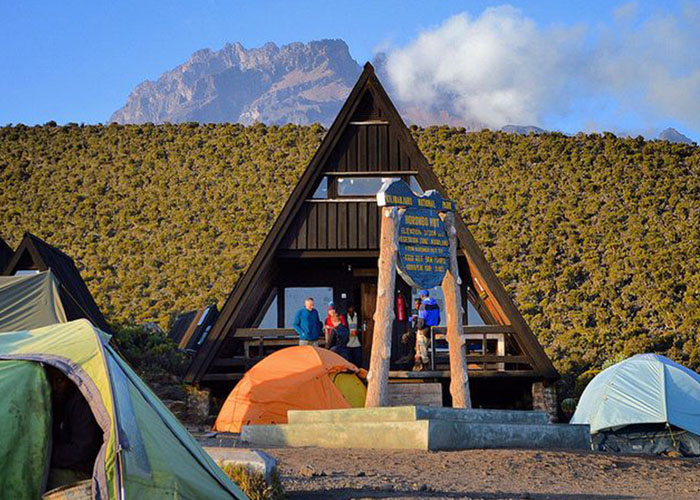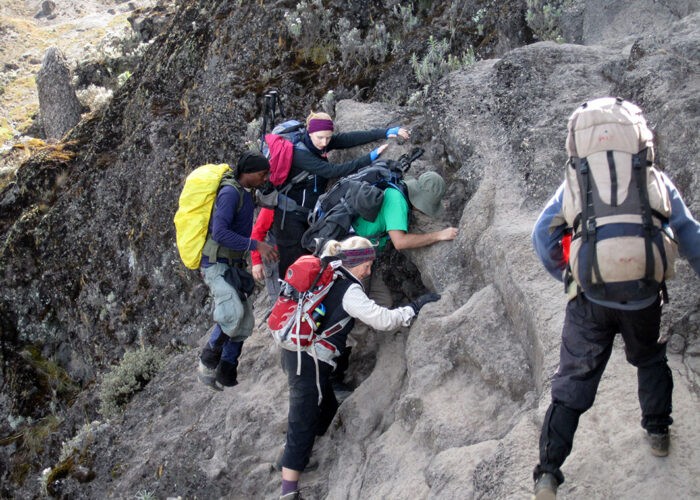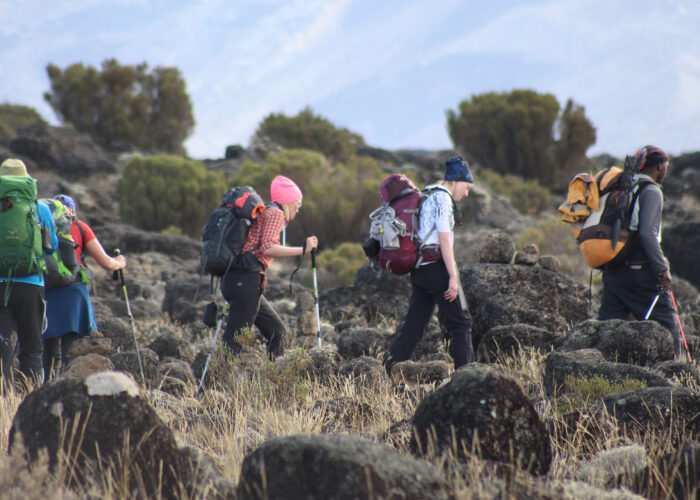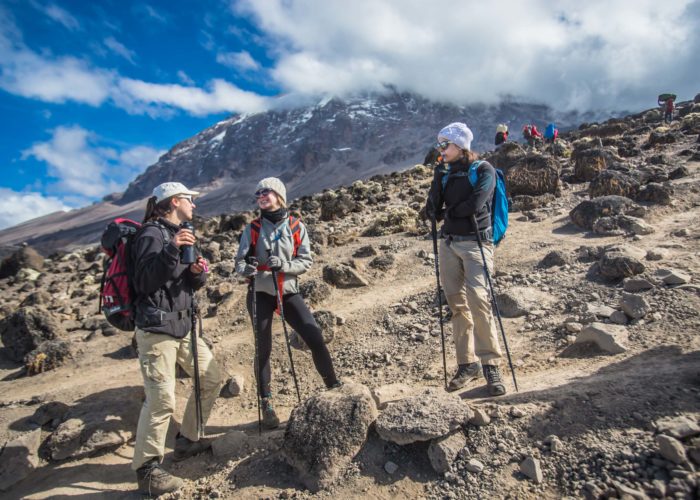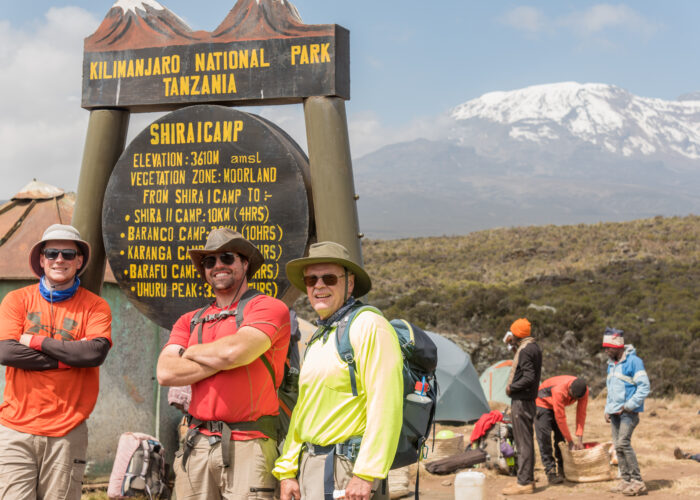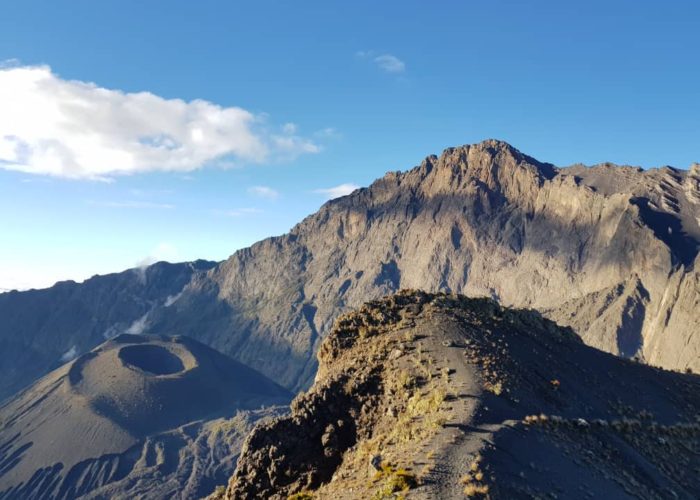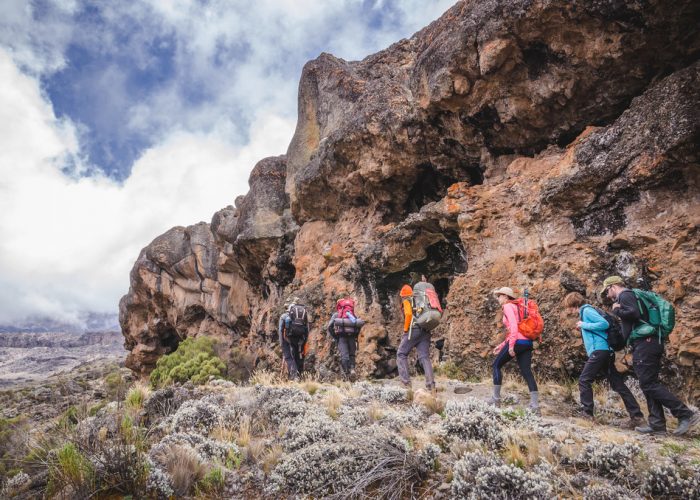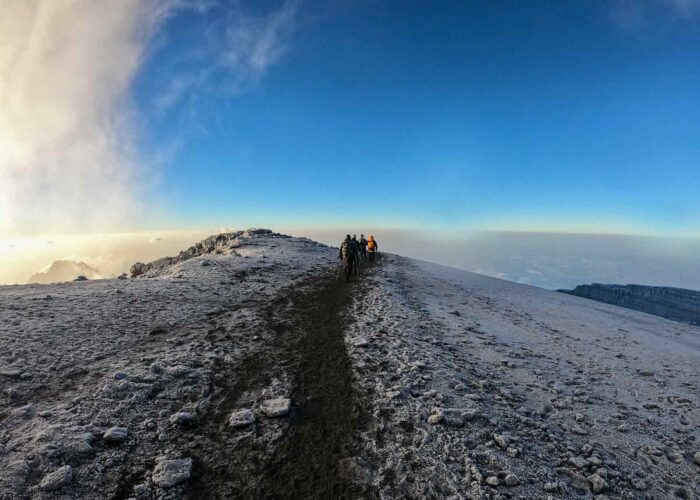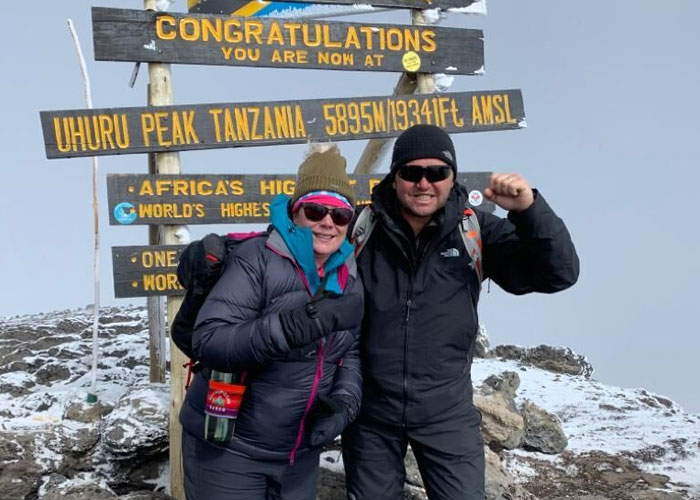The Rongai route is the one and the only route that approaches from the northern side of Mount Kilimanjaro, along the Kenya – Tanzania border. The Rongai route is a moderately challenging trail that offers a gentle approach towards Uhuru Peak, which is the main summit. We strongly recommend the Rongai route as one of the routes for climbers who are first-timers or with less trekking, hiking, and backpacking experience.
Best route when it is raining
Even though we recommend the 8 days Lemosho route as the best overall route, each route is unique on Mount Kilimanjaro in its own unique way. As fo Rongai Route, it is the best route when it is raining because the route runs along the leeward side of Mount Kilimanjaro. This area near the Kenyan-Tanzanian border, Loitokitok to be precise receives very little rain through out the year as compared to all the other routes, making it ideal for the rainy season climbs.
N.B: Rongai trail follows a gentler and flatter slope than the other routes on Mount Kilimanjaro but does not offer climbers the experience of climbing high and sleeping low. Altitude sickness affects climbers more here on the Rongai Route as compared to the other routes and an additional day or extra time for acclimatization is recommended and required.
Rongai is a low-traffic route and the only one that begins from the Kenyan side of Mount Kilimanjaro which borders the Amboseli national park, meaning you will be lucky enough to see some wildlife ( elephants, antelope, zebra, buffalo. Apart from Amboseli’s wildlife, you will as well encounter different vegetation zones of Mount Kilimanjaro like the Rainforest on the way down to Marangu Gate, heath, and moorland including the saddles’ desert-like surroundings on your way up.
Plan your climb on the Rongai route
- Distance: The Rongai route trail is 72 kilometres (44 miles) long
- Location: The Rongai route runs from the northeastern side towards the summit of Mount Kilimanjaro, near the Kenya – Tanzania border.
- Height: The accent to Mount Kilimanjaro’s Uhuru peak summit reaches a staggering 5,895 metres (19,341 feet) in height.
- Trail conditions: Rongai Route’s location on the northeast of Mount Kilimanjaro gets receives less humidity and rain as compared to the southern slopes. Climbers will less likely experience fewer rain conditions.
Rongai route success rate
The highest success rate of reaching the Uhuru peak summit via the Rongai Route is the 7 days Rongai route itinerary that includes an extra day for acclimatization with a success rate of around 80%. The 6 days itinerary that excludes that extra acclimatization day has a lower summit success rate of 65%.


